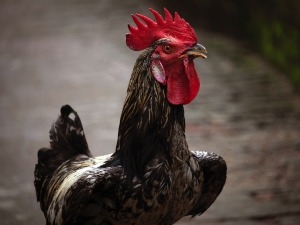
A good way to gauge the health of your chicken is to observe its appearance and its behavior.
Chickens cannot talk to communicate with humans but, changes in the bird’s behavior, or appearance, can help you figure out what’s going on with your bird. This article explores why your chicken’s comb is turning grey
Chicken comb turning grey:
If your chicken’s comb turns a different color, then this is a sign that there is something going on with your bird. Frostbite is the likely reason why your chicken’s comb is turning grey
Frostbite can develop in your bird during the colder months, it can develop in chickens who aren’t very well protected from the cold and it can develop if your bird’s coop is humid over the colder months.
Chickens use their wings to protect themselves from the cold during the colder months but sometimes their wings alone will not keep them from getting too cold
In the early stages of frostbite, your bird’s comb may simply turn paler because less blood is going to the comb.
The blood is rather going to the bird’s other internal organs, these internal organs are needed for survival and need to be kept warm over the comb.
Less blood will go to the bird’s comb in favor of the internal organs and this will cause the bird’s comb to start to turn pale because of a lack of blood. The comb will then start to turn grey, and even black.
The comb will become hard and start to swell and will be quite brittle to the touch. The comb turning grey or black is a sure sign of frostbite and dead tissue.
If left untreated, the bird’s comb will turn black as the necrosis causes the skin, nerves, and tissue to die off.
Frostbite can also affect your bird’s other body parts, like its feet. If the bird has frostbite on its feet then the bird will start to limp when temperatures get colder. Light-colored blisters on the bird’s feet also indicate frostbite.
What to do:
Treat the bird:
Treat the bird’s frostbite by slowly warming the bird, this can help prevent permanent nerve and tissue damage.
Do this by using a warm flannel or towel to slowly warm your bird up. The flannel or towel needs to be warmed up to the bird’s normal body temperature that being between 105 F to 107 F.
You can also help the bird recover by offering it electrolytes to drink as well as offering it vitamins
The dead tissue will naturally fall off, this is normal, don’t be alarmed when this happens. You just have to make sure that the area doesn’t get infected, you can use an antiseptic like veterycin to keep the skin clean
Keep your frostbitten chickens away from the other birds. The other birds may be curious about the grey comb and try to peck at it. Isolate the bird that has frostbite to keep this from happening.
Try to treat the bird as soon as you realize that it has frostbite, treating the bird sooner rather than later is recommended.
Preventing frostbite:
You can help prevent frostbite from developing by applying vaseline to your bird’s comb and to the other parts of the bird’s featherless body. The vaseline will act as a barrier from the cold and will help protect against frostbite.
You can also prevent frostbite from developing by checking all around your bird’s coop looking for cracks and holes where drafts can blow through.
Make sure that you lay down a layer of bedding appropriate for your birds, this bedding can be sawdust or woodchips. This will help keep your birds warm.
Also, make sure that your bird gets all the food that it needs, the digestion process helps to keep birds warm
What not to do:
Do not try to cut off the grey parts of the comb, this will be incredibly painful to your bird and an infection may develop on the wound.
Avoid trying to get your bird’s temperature up too quickly, placing your bird next to a heater will be too much of a shock to your chicken’s system
Avoid heating your bird’s coop in an effort to avoid frostbite, heating the coop can cause moisture to form in the coop which will contribute to your birds developing frostbite.
Humidity leads to condensation which leads to moisture being produced and this contributes to chickens developing frostbite
If you enjoyed this article then you may also be interested in other bird related articles. Here are some articles that you may be interested in: Iodine For Fowlpox, Chicken Has A Purple Comb And Is Lethargic, Chicken Comb Turning Blue, Turmeric For Fowlpox, Toothpaste For Fowlpox

